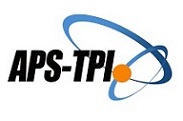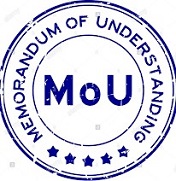Optimizing Student Engagement in Primary Science and Social Learning: The Feasibility of Contextual Interactive Video Media
DOI:
https://doi.org/10.23887/jeu.v12i2.91672Keywords:
Interactive Video, Contextual, Science and Social LearningAbstract
The lack of interactive, creative, and innovative instructional media provided by educators has resulted in students’ diminished interest and difficulty in concentrating during lessons, thereby leading to lower academic performance. This study aims to develop interactive video media based on the contextual teaching and learning approach for the topic of plant body parts in the fourth-grade science and social curriculum (IPAS) at elementary school. The research employed the ADDIE model, with data collected through observation, interviews, expert evaluations, and trial testing. Data were analyzed using quantitative descriptive analysis techniques. The results of the development of interactive video media indicate that: the design expert judgment test yielded a score of 92.05% in the "very good" category; the feasibility of the interactive video media, as evaluated by subject matter experts, achieved a score of 97.72% in the "very good" category; the scores obtained from learning design experts and media experts were 92.05% in the "very good" category, individual testing yielded a score of 93.33% in the "very good" category, and small group testing yielded a score of 89.72% in the "good" category; the effectiveness test using a correlated t-test produced t_calculated = 12.558, which is greater than t_table = 2.056 at a 5% significance level with 26 degrees of freedom, leading to the rejection of the null hypothesis (H₀) and the acceptance of the alternative hypothesis (H₁). This indicates a significant difference between pre-test and post-test scores before and after the use of the interactive video media. It can be concluded that the interactive video media product based on contextual teaching and learning is suitable for use in the learning process.
References
Alfaruque, S. Y., Sultana, S., Rastogi, R., & Jabeen, Z. (2023). Integrating Literature with Technology and Use of Digital Tools: Impact on Learning Outcomes. World Journal of English Language, 13(1), 278–285. https://doi.org/10.5430/wjel.v13n1p278.
Bahasoan, A. N., Ayuandiani, W., Mukhram, M., & Rahmat, A. (2020). Effectiveness of Online Learning In Pandemic Covid-19. International Journal of Science, Technology & Management, 1(2), 100–106. https://doi.org/10.46729/ijstm.v1i2.30.
Bunyamin, M. (2023). IPAS Implementation in Elementary Schools: How Teachers Build Student Understanding. Edunesia, 4(3), 533–550. https://doi.org/10.51276/edu.v4i3.533.
Dewi, D. A. P. H., Darsana, I. W., & Manuaba, I. . S. (2018). Pengaruh Pendekatan Contextual Teaching and Learning Berbasis Penilaian Portofolio Terhadap Kompetensi Pengetahuan Ipa. Journal for Lesson and Learning Studies, 1(3). https://doi.org/10.23887/jlls.v1i3.15387.
Fidan, M., & Fidan, M. (2024). The effects of video‐driven discussions integrated into the flipped classroom model on learning achievement, practical performance, and higher‐order thinking skills in dental education. Journal of Computer Assisted Learning, 40(1), 158–175. https://doi.org/10.1111/jcal.12869.
Fitriansyah, F. (2023). The Effectiveness of Using Learning Videos on Student Science Learning Outcomes in Digital PR Courses. IJIS Edu : Indonesian J. Integr. Sci. Education, 5(2), 117–126. http://dx.doi.org/10.29300/ijisedu.v5i2.11040.
Geni, K. H. Y. W., Sudarma, I. K., & Mahadewi, L. P. P. (2020). Pengembangan Multimedia Pembelajaran Interaktif Berpendekatan CTL Pada Pembelajaran Tematik Siswa Kelas IV SD. Jurnal Edutech Undiksha, 8(2), 1. https://doi.org/10.23887/jeu.v8i2.28919.
Hadi, W., Yuksafa, R., Yarmi, G., Safitri, D., Lestari, I., Suntari, Y., Umasih, Marini, A., Sudrajat, A., & Iskandar, R. (2022). Enhancement of Students’ Learning Outcomes through Interactive Multimedia. International Journal of Interactive Mobile Technologies, 16(7), 82–98. https://doi.org/10.3991/ijim.v16i07.25825.
Hanik, N. R., Harsono, S., & Nugroho, A. A. (2018). Penerapan Pendekatan Contextual Teaching and Learning dengan Metode Observasi untuk Meningkatkan Hasil Belajar pada Matakuliah Ekologi Dasar. Jurnal Pendidikan Matematika Dan IPA, 9(2), 127–138. https://doi.org/10.26418/jpmipa.v9i2.26772.
Hapsari, A. S., Hanif, M., Gunarhadi, & Roemintoyo. (2019). Motion Graphic Animation Videos to Improve the Learning Outcomes of Elementary School Students. European Journal of Educational Research, 8(4), 1245–1255. https://doi.org/10.12973/eu-jer.8.4.1245.
Hilmi, M., Djono, D., & Ediyono, S. (2023). Projek Penguatan Profil Pelajar Pancasila di Sekolah Penggerak Kabupaten Sragen Tahun 2023. Proceedings Series on Social Sciences & Humanities, 13, 172–179. https://doi.org/10.30595/pssh.v13i.901.
Karaismailoglu, F., & Yildirim, M. (2024). The effect of 3D modeling performed using Tinkercad or concrete materials in the context of the flipped classroom on pre-service teachers’ spatial abilities. Research in Science & Technological Education, 42(4), 1264–1283. https://doi.org/10.1080/02635143.2023.2223134.
Lubis, R. R., Dwiningrum, S. I. A., & ... (2023). Development Powtoon Animation Video in Indonesian Language Learning to Improve Student Learning Outcomes Elementary Schools. Journal of Computer Science, Information Technology and Telecommunication Engineering, 4(2). https://doi.org/10.30596/jcositte.v4i2.15990.
Luthfiyati, D., Purwati, O., Widyastuti, W., & Munir, A. (2023). Integrating Distance Education Into Mobile Devices Using Adobe Connect Pro. Al-Ishlah Jurnal Pendidikan. https://doi.org/10.35445/alishlah.v15i1.2246.
Muslim, M., Nusantara, T., Sudirman, S., & Irawati, S. (2024). The causes of changes in student positioning in group discussions using Polya’s problem-solving and commognitive approaches. Eurasia Journal of Mathematics, Science and Technology Education, 20(9). https://doi.org/10.29333/ejmste/15148.
Nurwidya, R., & Nurjannah, N. (2023). Implementasi Kurikulum Merdeka melalui Strategi Proyek Penguatan Profil Pelajar Pancasila (P5) untuk Meningkatkan Budaya Kerja Siswa di SMK Negeri 2 Boyolangu Kata kunci: Budaya kerja Kurikulum merdeka P5 Alamat Korespondensi. Belantika Pendidikan, 6(2), 1–8. https://doi.org/10.47213/bp.v6i2.200.
Oktapiani, R., & Rustini, T. (2016). Contextual Teaching And Learning (CTL) Untuk Meningkatkan Kreativitas Berpendapat Siswa Pada Pembelajaran IPS. EduHumaniora | Jurnal Pendidikan Dasar Kampus Cibiru, 5(2), 121–127. https://doi.org/10.17509/eh.v5i2.2843.
Oktaviana, D., Prihatin, I., & Fahrizar, F. (2020). Pengembangan Media Pop-Up Book Berbasis Contextual Teaching and Learning Dalam Pencapaian Kemampuan Pemecahan Masalah Siswa Smp. AKSIOMA: Jurnal Program Studi Pendidikan Matematika, 9(1), 1. https://doi.org/10.24127/ajpm.v9i1.2543.
Park, J., Bryant, D. P., & Shin, M. (2022). Effects of Interventions Using Virtual Manipulatives for Students With Learning Disabilities: A Synthesis of Single-Case Research. Journal of Learning Disabilities, 55(4), 325–337. https://doi.org/10.1177/00222194211006336.
Rante, P., Sudarto, & Ihsan, N. (2013). Pengembangan multimedia pembelajaran fisika berbasis audio-video eksperimen listrik dinamis di smp. Jurnal Pendidikan IPA Indonesia, 2(2), 203–208. https://doi.org/10.15294/jpii.v2i2.2724.
Ristanto, R. H., Rusdi, R., Mahardika, R. D., Darmawan, E., & Ismirawati, N. (2020). Digital Flipbook Imunopedia (DFI): A Development in Immune System e-Learning Media. International Journal of Interactive Mobile Technologies (IJIM), 14(19), 140–162. https://doi.org/10.3991/ijim.v14i19.16795.
Santoso, G., Damayanti, A., Murod, M., & Imawati, S. (2024). Implementasi Kurikulum Merdeka melalui Literasi Proyek Penguatan Profil Pelajar Pancasila. Jurnal Pendidikan Transformatif (Jupetra, 02(01), 84–90. https://doi.org/10.9000/jupetra.v2i1.127.
Supri, S., Widiasih, W., & Rumanta, M. (2023). Pengaruh Model Pembelajaran Contextual Teaching and Learning (CTL) Berbantuan Video Scribe dan Keaktifan Siswa terhadap Hasil Belajar Muatan Pembelajaran IPA di Kelas VI SD Kecamatan Toboali. Cakrawala Repositori IMWI, 6(2), 1079–1092. https://doi.org/10.52851/cakrawala.v6i2.318.
Zakiyah, F. I., Pratiwi, D. E., & Wati, E. S. (2024). Peningkatan Hasil Belajar Peserta Didik Melalui Penggunaan Pendekatan Pembelajaran Teaching at The Right Level (TaRL) pada Pembelajaran IPAS Kelas VI Sekolah Dasar. Journal of Educational Science and E-Learning, 1(2), 69–77. https://doi.org/10.62354/jese.v1i2.26.
Downloads
Published
How to Cite
Issue
Section
License
Copyright (c) 2024 Cok Istri Dian Natharani, Anak Agung Gede Agung, Didith Pramunditya Ambara

This work is licensed under a Creative Commons Attribution-ShareAlike 4.0 International License.
Authors who publish with the Jurnal EDUTECH Undiksha agree to the following terms:
- Authors retain copyright and grant the journal the right of first publication with the work simultaneously licensed under a Creative Commons Attribution License (CC BY-SA 4.0) that allows others to share the work with an acknowledgment of the work's authorship and initial publication in this journal.
- Authors are able to enter into separate, additional contractual arrangements for the non-exclusive distribution of the journal's published version of the work (e.g., post it to an institutional repository or publish it in a book), with an acknowledgment of its initial publication in this journal.
- Authors are permitted and encouraged to post their work online (e.g., in institutional repositories or on their website) prior to and during the submission process, as it can lead to productive exchanges, as well as earlier and greater citation of published work. (See The Effect of Open Access)







